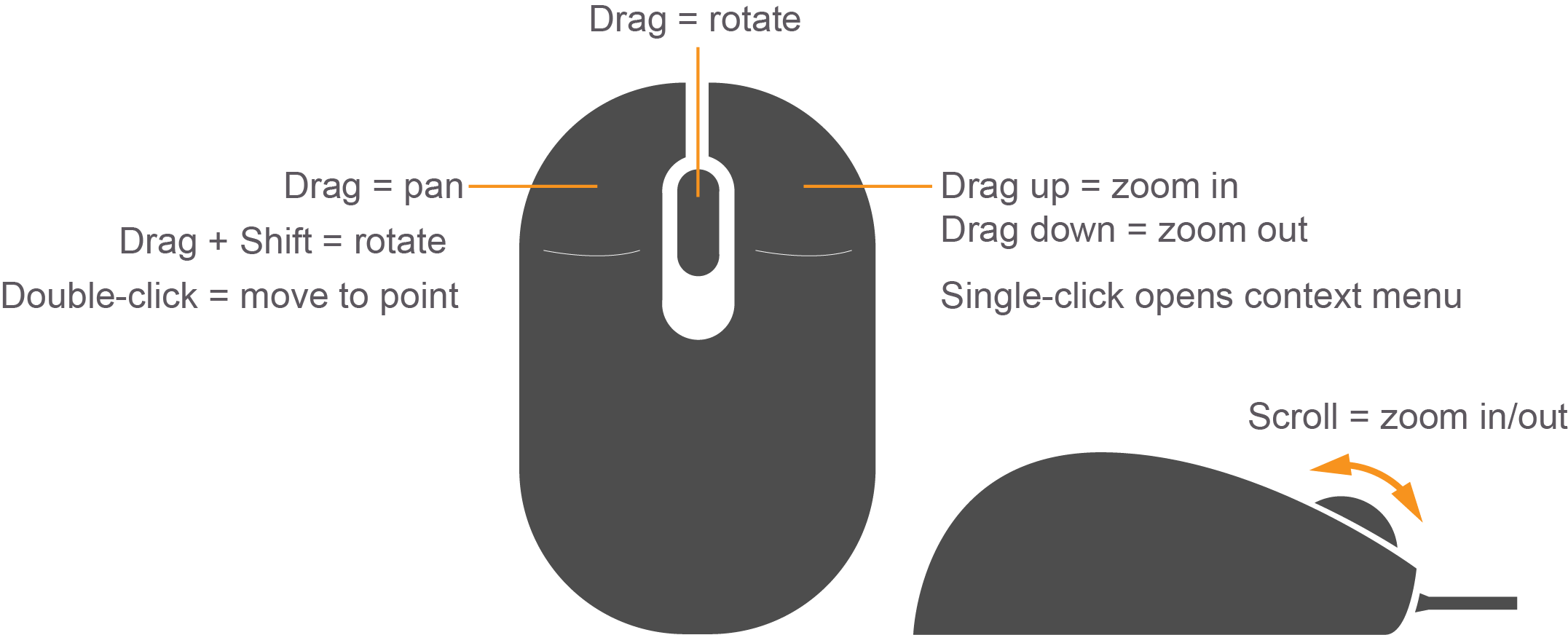05. Exploring Gazebo User Interface
Understanding Unified Robot Description Format
Exploring Gazebo User Interface
I would highly recommend following along this session on your own computer. First we will launch gazebo from our terminal by simply typing in
$ gazeboBe advised, sometimes Gazebo has a notorious tendency to get stuck in a seemingly infinite loading loop, if gazebo does not fully load in about one minute, consider closing it by pressing Ctrl+C while the gazebo terminal is active and restarting it.
The Gazebo gui is divided into 4 major sections:
- Scene
- Side Panel
- Toolbars
- Menu
Scene
The scene is where you will be spending most of your time, whether creating a simulation or running one. While you can use a trackpad to navigate inside the scene, a mouse is highly recommended.
You can pan the scene by pressing LMB and dragging. If you hold down SHIFT in addition, you can now rotate the view. You can zoom in and out by using the mouse scroll or pressing and dragging the RMB.

Side Panel
The side panel on the left consists of three tabs: World, Insert, and Layers.
World
This tab displays the lights and models currently in the scene. By clicking on individual model, you can view or edit its basic parameters like position and orientation. In addition, you can also change the physics of the scene like gravity and magnetic field via the Physics option. The GUI option provides access to the default camera view angle and pose.
Insert
This is where you will find objects (models) to add to the simulation scene. Left click to expand or collapse a list/directory of models. To place an object in the scene, simply left click the object of interest under the Insert tab; this will bind the object to your mouse cursor and now you can place it anywhere in the scene by left clicking at that location.
Layers
This is an optional feature, so this tab will be empty in most cases. To learn more about Layers, click here.
Top Toolbar
Next we have a toolbar at the top, it provides quick access to some cursor types, geometric shapes, and views.
Select mode
The most commonly used cursor mode, allows you to navigate the scene.
Translate mode
One way to change an object's position is to select the object in world tab on the side panel and then change its pose via properties. This is cumbersome and also unnatural, the translate mode cursor allows you to change the position of any model in the scene. Simply select the cursor mode and then use proper axes to drag the object around until satisfied.
Rotate mode
Similar to translate mode, this cursor mode allows changing the orientation of any given model.
Scale mode
Scale mode allows changing the scale and hence overall size of any model.
Undo/Redo
Since we humans are best at making mistakes, the undo tool helps us hide our mistakes. On the other hand if you undid something that you did not intend to, redo tool to the rescue.
Simple shapes
You can insert basic 3D models like cubes, spheres or cylinders into the scene.
Lights
Add different light sources like spotlight, point light or directional light to the scene.
Copy/Paste
These tools let you copy/paste models in the scene. On the other hand you can simply press Ctlr+C to copy and Ctrl+V to paste any model.
Align
This tool allows you to align one model with another along one of the three principle axes.
Change view
This one is pretty useful. This tool lets you view the scene from different perspectives like topview, sideview, frontview, bottomview? Wonder how useful the bottomview is, anyways moving on.
Bottom Toolbar
The Bottom Toolbar has a neat play/pause button. This allows you to pause the simulation for conveniently moving objects around. This toolbar also displays data about the simulation, like the simulation time and its relationship to real-life time. An FPS counter can be found here to gauge your systems performance for any given scene.